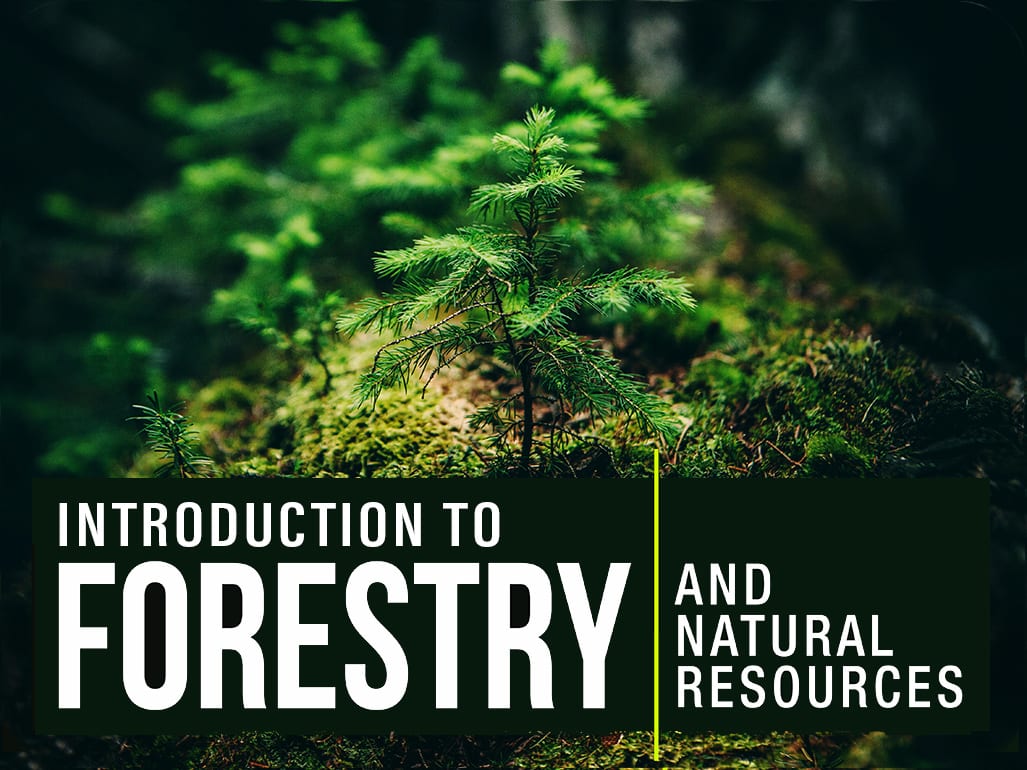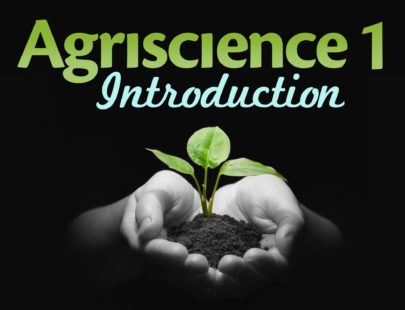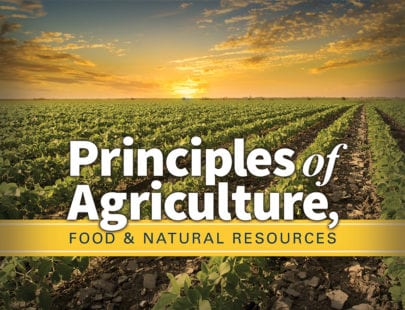
Introduction to Forestry & Natural Resources
Thriving forests are an essential part of the health of the planet, from our wildlife’s ecosystem to providing humans with clean air to lumber and paper products. But forests cannot protect themselves and depend greatly on humans for conservation. Learn more about this meaningful relationship and how environmental policy, land use, water resources, and wildlife management all factor into current forestry issues. Forestry offers diverse professional opportunities, and for those concerned about the environment, it is a great choice.
Units at a Glance
Unit 1: What is Forestry?
Thriving forests are an essential part of the health of the planet, which is why there is an entire profession devoted to their health and preservation, forestry. Forests have an important role in the health of the planet. They provide a lot of important resources, ranging from lumber to clean air. Those focusing on forestry can expect to study a lot of biology, with particular attention to the structure of trees. Of course, identifying trees is also an important skill to develop. Trees cannot thrive without the right soil, so those interested in this career will be spending a lot of time examining dirt. Fortunately, both trees and soil have identifying characteristics that you will explore in this unit.
What will you learn in this unit?
- Describe the historical and economic significance of forestry.
- Illustrate tree anatomy and growth.
- Discuss photosynthesis and respiration.
- Analyze and interpret soil survey data.
Unit 2: All About Ecosystems
Having a thriving forest is not just about the trees. Every living organism in the area shapes the health of the forest because forests are ecosystems. This means that a change in one species likely impacts another. Wildlife management is also part of effectively managing forests. Forestry also includes silviculture, the maintenance of the forests and all they contain. Often forests serve several purposes at once, so multiuse forests are quite common. Thus those interested in a forestry career need to consider all aspects of how forests are used, by both humans and animals. Without this kind of consideration, ecosystems cannot thrive.
What will you learn in this unit?
- Describe silviculture.
- Define watershed management.
- Compare forests and woodlands.
- Identify wildlife population management practices.
- Apply multiuse principles to forests and other lands.
Unit 3: Measuring & Monitoring the Forest
You know that the density of trees determines the difference between a forest and a woodland, but how do you know when the land has the right number of trees? That’s where measuring and monitoring come in. To keep forests healthy, a variety of data must be collected. This includes everything from the number, size, and variety of trees to how the water flows within the forest. There are methods for monitoring and measuring these natural resources, and this kind of attention is particularly important in cases where industries depend on the health of forests, as in the timber industry.
What will you learn in this unit?
- Measure trees and forest volume.
- Estimate timber growth and yield.
- Evaluate by cruising timber stands.
- Calculate quality and volume by scaling logs.
- Monitor water resources.
Unit 4: Forest Management Basics
Some threats that forests face come from nature. Because they are natural, these threats play a role in the development of forests. Fires can bring unparalleled destruction or provide the foundation for a new generation of growth. Other elements, such as pests and diseases, also are a threat to thriving ecosystems. In this unit, you’ll learn more about these threats as well as how forestry professionals fight these threats. Proper management can help minimize the damage, but those in forestry will need to monitor these threats as well.
What will you learn in this unit?
- Discuss the role of fire in forest management.
- Prescribe controlled burning for forest management.
- Demonstrate the control of destructive agents, such as insects and disease.
- Apply the principles of nursery management.
Unit 5: Working with Wood
The timber industry is an important part of the American economy, and it takes a variety of experts to keep it thriving. When economic times are hard, many industries that the timber industry depends on, like construction and furniture, suffer. International trade also impacts the industry. Those working in the timber field need to understand not only how forests thrive, but also how the wood they produce will be used after it is harvested. Getting timber to the markets has gotten much more complex as technological innovations in everything from measuring devices to cutting equipment have become more precise. The advancements have also improved the production side of the industry, making timber processing and product development easier than ever before.
What will you learn in this unit?
- Explain principles of forestry economics.
- Identify research and development issues in forestry and wood technology.
- Define technological advances in the timber industry.
- Compare timber manufacturing processes and products.
Unit 6: Getting the Lay of the Land
Maps are one of the most useful tools for those in forestry. Given all of the measuring and monitoring involved in the forest industry, keeping track of the land measured is essential, as is finding the exact section of the forest that was
measured previously. Improvements in technology and digital mapping have made tracking changes in the land and forest easier than ever before. In addition, it has never been easier to update information. At the same time, those in forestry still need to know how to perform basic navigation and surveying functions without depending on electronic devices.
What will you learn in this unit?
- Describe different types of maps.
- Interpret map scale and actual distance.
- Use a geographic information system (GIS) to interface geospatial data.
- Identify direction from a map.
Unit 7: Ethics, Ecology, and Safety
Maintaining thriving forests comes with a lot of responsibility. Those in forestry have quite a few standards to keep in mind as they perform their jobs. Professional ethics help determine the appropriate course of action, and government agencies create rules and regulations for forestry to ensure that forests are treated well. In addition, the public, particularly environmentalist groups, hold foresters accountable for the state of the forest. At the same time, forestry professionals work with business owners and those whose property borders forests—these stakeholders also have their own interests. Fortunately, guidelines are in place that allow forestry professionals to negotiate these relationships and preserve the forest.
What will you learn in this unit?
- Identify and evaluate ethical guidelines.
- Apply environmental principles to the agricultural industry.
- Locate applicable local, state, and federal rules and regulations and assistance programs.
- Recognize applicable local, state, and federal rules and regulations and assistance programs.
Unit 8: Professional Skills in Forestry
Forestry offers diverse professional opportunities, and for those concerned about the environment, it is a great choice.
This unit will explore some of the career options in forestry and the background required to start them. Resources, such as professional organizations, can help aspiring foresters get their start. Like most industries, forestry needs employees who understand and demonstrate appropriate conduct in the workplace. This means everything from working effectively in groups to sticking to a budget. Safety is also especially important in forestry—a good employee always follows safety procedures. Understanding the expectations is the first step in starting your forestry career.
What will you learn in this unit?
- Apply basic financial management skills.
- Demonstrate knowledge of personal and occupational safety practices in the workplace.
- Identify career development and entrepreneurship opportunities in forestry and woodland ecosystems.
- Identify employers’ expectations, including appropriate work habits, ethical conduct, legal responsibilities, and good citizenship skills.
Required Materials
- A digital camera or camera phone
- Approximately 1 cup of soil
- A clear glass jar with a lid
- Water to fill the jar
- A ruler or tape measure
- Marker or tape
- Supplies for an experiment of the student’s choice
- Samples of water from three different water sources
- 3 clear glass containers with lids


